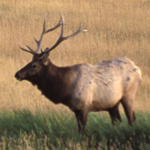| Comments: | Subgenus Graphiurus. Following the arrangement of Ellerman et al. (1953), Holden (1993) provisionally assigned dasilvai and parvulus as synonyms of G. platyops. Ansell (1974, 1978) recognized that the NW Zambian population (identified by him as G. platyops parvulus) is morphologically and ecologically different from G. platyops. Based on my study of type specimens and large series of Angolan and Zambian specimens, the Angolan and NW Zambia populations exhibit a distinctive skull morphology that is consistently separable from that of G. platyops and G. rupicola. Ansell (1974, 1978) correctly surmised that these populations are probably phylogenetically aligned with G. microtis. Graphiurus angolensis (de Winton, 1897), precedes Graphiurus parvulus Monard, 1932, and is the correct name for these populations. Assigning parvulus as a junior synonym is problematic. In describing parvulus, Monard (1933) did not designate a holotype, based his description upon several specimens, and listed three localities where he caught this dormouse. He later provided a more detailed description of parvulus, identified nine specimens as representing the species, along with a table of measurements (Monard, 1935). I examined several of Monardís specimens; most are either young or poorly preserved, and except for their paler dorsal pelage color, the material appears inseparable from samples of G. angolensis. Graphiurus ocularis, which occurs in South Africa, was reported from Parc National de líUpemba, Dem. Rep. Congo (Verschuren, 1987). The specimen upon which the G. ocularis record appears to be based (examined by me in IRSNB) consists of only a skin that closely resembles G. angolensis, although it could possibly represent a large or overstuffed individual of G. microtis; the skin is not an example of G. ocularis. The relationship between populations representing G. angolensis and G. microtis needs to be studied and documented. Reviewed by Holden (In Press). |



